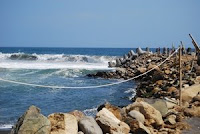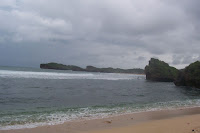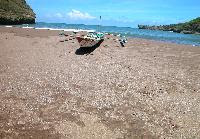LINE 1
Terminal - Jl. Veteran - Jl. Warungboto - Jl. Perintis Kemerdekaan - Jl. Menteri Supeno - Jl. Kol Sugiyono - Pojok Beteng Wetan - Jl. Mayjen Sutoyo - Plengkung Gading - Jl. MT Haryono - Pojok Beteng Kulon - Jl. KH Wakhid Hasyim - Jl. Letjend S Parman - Jl. Kapt P Tendean - Jl. Hos Cokroaminoto - Jl. Kyai Mojo - Jl. P Diponegoro - Tugu Yogya - Jl. Jend Sudirman - Jl. Csimanjuntak - Jl. Terban - Jl. Kolombo - Bunderan Ugm - Jl. Kaliurang - Jl. C Simanjuntak - Jl. Jend Sudirman - Tugu Yogya - Jl. P Diponegoro - Jl. Kyai Mojo - Jl. Hos Cokroaminoto - Jl. Kapt P Tendean - Jl. Letjend S Parman - Jl. KH Wakhid Hasyim - Pojok Beteng Kulon - Jl. MT Haryono - Pojok Beteng Wetan - Jl. Kol Sugiyono - Jl. Menteri Supeno - Jl. Veteran - Terminal
LINE 10
Terminal - Jl. Veteran - Jl. Kenari - Mandala Krida - Jl. Gayam - Jl. Bausasran - Jl. Juminahan - Jl. Mataram - Jembatan Kewek - Jl. Abu Bakar Ali - Kridosono/telkom - Jl. Kom Yos Sudarso - Jl. Atmosukarto - Jl. Dr Wahidin - Jl. Kusbini - Jl. Langensari - Jl. Munggur - Jl. Laksda Adisucipto - Jl. Solo - Jl. Kledokan - Jl. Babarsari Upn - Jl. Solo - Ringroad Utara - Terminal Condong Catur - Jl. Gejayan - Jl. Kolombo - Jl. Lingkar Ugm Penuh - Jl. Kaliurang Selatan - Jl. Terban - Jl. Kolombo - Jl. Gejayan - Terminal Condong Catur - Ringroad Utara - Jl. Solo - Jl. Babarsari Upn - Jl. Kledokan - Jl. Solo - Jl. Laksda Adisucipto - Jl. Jend Urip Sumoharjo - Galeria Mall - Jl. Jend Sudirman - Jl. Suroto - Kridosono/telkom - Jl. Kom Yos Sudarso - Jl. Abu Bakar Ali - Jembatan Kewek - Jl. Mataram - Jl. Mas Suharto - Jl. Hayam Wuruk - Jl. Bausasran - Jl. Gayam - Stadion Mandala Krida - Jl. Kenari - Sgm - Jl. Veteran - Jl. Warungboto - Jl. Perintis Kemerdekaan - Jl. Veteran - Terminal
LINE 11
Terminal - Jl. Veteran - Jl. Ki Penjawi - Jl. Rejowinangun - Jl. Gedongkuning Selatan - Jl. Kemasan - Jl. Nyi Pembayun - Jl. Tegalgendu - PMI Kodya Yogya - Jl. Tegalturi - Jl. Sorogenen - Rsu Kodya - Jl. Tri Tunggal - Pasar Karang Kajen - Jl. Menukan - Jl. Parangtritis - Ringroad Selatan - Jl. Bantul - Pojok Beteng Kulon - Jl. KH Wahid Hasyim - Jl. Letjend S Parman - Jl. Patang Puluhan - Jl. Ikip Pgri - Jl. Re Martadinata - Jl. Letjend S Prapto - Kantor Samsat - Jl. Tentara Pelajar - Jl. Magelang - Ringroad Utara - Monumen Yogya Kembali - Jl. Monumen Yogya Kembali - Jl. Am Sangaji - Tugu Yogya - Jl. Pangeran Diponegoro - Jl. Tentara Pelajar - Kantor Samsat - Jl. Jl.agran Lor - Jl. Pasar Kembang - Stasiun Tugu Yogya - Jl. Malioboro - Jl. Jend A Yani - Pasar Besar Beringharjo/kantor Pos Yogya - Jl. KHa Dahlan - Rsu Pku Muhammadiyah - Jl. Re Martadinata - Jl. Ikip Pgri - Jl. Patangpuluhan - Jl. Bugisan Ringroad Selatan - Jl. Parangtritis - Jl. Menukan - Pasar Karang Kajen - Jl. Tri Tunggal - Rsu Kodya - Jl. Sorogenen - Jl. Tegalturi - Jl. Tegalgendu - PMI Kodya Yogya - Jl. Nyi Pembayun - Jl. Kemasan - Jl. Gedongkuning Selatan - Jl. Rejowinangun - Jl. Ki Penjawi - Jl. Warungboto - Jl. Perintis Kemerdekaan - Jl. Veteran - Terminal
LINE 12
Terminal - Jl. Veteran - Jl. Pandean - Jl. Glagahsari - Jl. Kusumanegara - Jl. Sultan Agung - Jl. Psenopati - Kantor Pos Yogya - Jl. KHa Dahlan - Jl. Re Martadinata - Jl. Hos Cokroaminoto - Jl. Pembela Tanah Air - Jl. Tentara Pelajar - Samsat - Jl. Magelang/wolter Monginsidi - Jl. Prof Dr Sardjito - Jl. Terban - Jl. Kolombo - Jl. Lingkar Ugm Penuh - Jl. Kaliurang - Jl. Prof Dr Sardjito - Jl. Wolter Monginsidi - Jl. Magelang - Jl. Tentara Pelajar - Samsat - Jl. Pembela Tanah Air - Jl. Hos Cokroaminoto - Jl. Re Martadinata - Jl. KHa Dahlan - Kantor Pos Yogya - Jl. Psenopati - Jl. Sultan Agung - Jl. Kusumanegara - Sgm - Jl. Veteran - Jl. Warungboto - Jl. Perintis Kemerdekaan - Jl. Veteran - Terminal
LINE 13
Terminal - Jl. Veteran - Jl. Warungboto - Jl. Perintis Kemerdekaan - Jl. Menteri Supeno - Jl. Tamansiswa - Jl. Sultan Agung - Jl. Gajahmada - Jl. Hayam Wuruk - Jl. Emplasemen Lempuyangan - Jl. Kom Yos Sudarso - Kridosono/telkom - Jl. Faridan M Noto - Jl. Jend Sudirman - Tugu Yogya - Jl. Am Sangaji - Jl. Monumen Yogya Kembali - Jl. Monumen Yogya Kembali - Ring Road Utara - Terminal Condong Catur - Jl. Gejayan - Jl. Kolombo - Jl. Lingkar Ugm Penuh - Jl. Kaliurang Selatan - Jl. Terban - Jl. Kolombo - Jl. Gejayan - Terminal Condong Catur - Ring Road Utara - Monumen Yogya Kembali - Jl. Monumen Yogya Kembali - Jl. Am Sangaji - Tugu Yogya - Jl. Jend Sudirman - Jl. Suroto - Kridosono/telkom - Jl. Kom Yos Sudarso - Jl. Emplasemen Lempuyangan - Jl. Hayam Wuruk - Jl. Gajah Mada - Jl. Sultan Agung - Jl. Tamansiswa - Jl. Menteri Supeno - Jl. Veteran – Terminal
LINE 14
Terminal - Jl. Veteran - Jl. Pandean - Jl. Glagahsari - Jl. Kusumanegara - Jl. Cendana - Mandala Krida - Jl. Gondosuli - Jl. Mojo - Jl. Munggur - Jl. Gejayan - Terminal Condong Catur - Ring Road Utara - Monumen Yogya Kembali - Jl. Monumen Yogya Kembali - Jl. Am Sangaji - Jl. Prof Dr Sardjito - Jl. Terban - Jl. Kolombo - Jl. Lingkar Penuh Ugm - Jl. Kaliurang - Jl. Profdr Sardjito - Jl. Am Sangaji - Jl. Monumen Yogya Kembali - Monumen Yogya Kembali - Ring Road Utara - Terminal Condong Catur - Jl. Gejayan - Jl. Jend Urip Sumoharjo - Galeria Mall - Jl. Wahidin S - Jl. Kusbini - Jl. Langensari - Jl. Munggur - Jl. Mojo - Jl. Gondosuli - Mandala Krida - Jl. Cendana - Jl. Kusumanegara - Bonbin Gembira Loka - Jl. Gedong Kuning - Jl. Rejowinangun - Jl. Ki Penjawi - Jl. Warungboto - Jl. Perintis Kemerdekaan - Jl. Veteran - Terminal
LINE 15
Terminal - Jl. Veteran - Jl. Warungboto - Jl. Perintis Kemerdekaan - Jl. Menteri Supeno - Jl. Kol Sugiyono - Jl. Sisingamangaraja - Pasar Karangkajen - Jl. Menukan - Jl. Jogokaryan - Jl. Di Panjaitan - Plengkung Gading - Jl. Mayjen Sutoyo - Jl. Pojok Beteng Wetan - Jl. Brigjen Katamso - Purawisata - Jl. Ibu Ruswo - Jl. Trikora - Kantor Pos - Jl. KHa Dahlan - Jl. Re Martadinata - Jl. Wates - Pasar Gamping - Jl. Sidoarum - Jl. Bantulan - Jl. Godean - Jl. Kyai Mojo - Jl. Magelang - Jl. Wolter Monginsidi - Jl. Prof Dr Sardjito - Jl. Terban - Jl. Kolombovlingkar Ugm Penuh - Jl. Kaliurang - Jl. Prof Dr Sardjito - Jl. Wolter Monginsidi - Jl. Magelang - Jl. Kyai Mojo - Jl. Godean - Jl. Bantulan - Jl. Sidoarum - Pasar Gamping - Jl. Wates - Jl. Re Martadinata - Jl. KHa Dahlan - Kantor Pos - Jl. Trikora - Jl. Ibu Ruswo - Jl. Brigjen Katamso - Purawisata - Jl. Pojok Beteng Wetan - Jl. Sutoyo - Plengkung Gading - Jl. Di Panjaitan - Jl. Mangkuyudan - Jl. Parangtritis - Jl. Menukan - Pasar Karangkajen - Jl. Sisingamangaraja - Jl. Kol Sugiyono - Jl. Menteri Supeno - Jl. Veteran - Terminal
LINE 16
Terminal - Jl. Veteran - Jl. Warungboto - Jl. Perintis Kemerdekaan - Jl. Menteri Supeno - Jl. Kol Sugiyono - Jl. Sisingamangaraja - Pasar Karangkajen - Jl. Menukan - Jl. Parangtritis - Pojok Beteng Wetan - Jl. Brigjen Katamso - Purawisata - Jl. Mayor Suryotomo - Jl. Limaran - Jl. Sriwedari - Jl. P Senopati - Jl. Sultan Agung - Jl. Kusumanegara - Mandala Krida - Jl. Kenari - Jl. Ipda Tut Harsono - Jl. Laksda Adisucipto - Jl. Gejayan - Terminal Condong Catur - Jl. Gejayan - Jl. Kolombo - Jl. Cik Di Tiro - Jl. Suroto - Kridosono/telkom - Jl. Kom Yos Sudarso - Jl. Suroto - Jl. Jend Sudirman - Jl. C Simanjuntak - Jl. Jendsudirman - Jl. Cik Di Tiro - Jl. Kolombo - Jl. Gejayan - Terminal Condong Catur - Jl. Gejayan - Jl. Laksda Adisucipto - Jl. Ipda Tut Harsono - Jl. Kenari - Mandala Krida - Jl. Kusumanegara - Jl. Sultan Agung - Jl. Brigjen Katamso - Purawisata - Pojok Beteng Wetan - Jl. Parangtritis - Jl. Menukan - Pasar Karangkajen - Jl. Sisingamangaraja - Jl. Kol Sugiyono - Jl. Menteri Supeno - Jl. Veteran - Terminal
LINE 17
Terminal - Jl. Veteran - Sgm - Jl. Kusumanegara - Jl. Tamansiswa - Jl. Kol Sugiyono - Pojok Beteng Wetan - Jl. Mayjen Sutojo - Plengkung Gading - Jl. MT Haryono - Pojok Beteng Kulon - Jl. KH Wakhid Hasyim - Jl. Letjen S Parman - Jl. Kapt P Tendean - Jl. Re Martadinata - Jl. KHa Dahlan - Rs Pku Muhamadiah - Jl. Bayangkara - Jl. Jogonegaran - Jl. Gandekan - Jl. Jl.agran Lor - Jl. Tentara Pelajar - Samsat - Jl. Magelang - Jl. Wolter Monginsidi - Jl. Prof Dr Sardjito - Jl. C Simanjuntak - Terminal Terban - Jl. C Simanjuntak - Jl. Prof Dr Sardjito - Jl. Wolter Monginsidi - Jl. Magelang - Jl. Tentara Pelajar - Samsat - Jl. Jl.agran Lor - Jl. Jl.agran - Jl. Pringgokusuman - Jl. Letjen S Prapto - Jl. Re Martadinata - Jl. Kapt P Tendean - Jl. Letjen S Parman - Jl. KH Wakhid Hasyim - Pojok Beteng Kulon - Jl. Jend MT Haryono - Jl. Plengkung Gading - Jl. Mayjen Sutoyo - Pojok Beteng Wetan - Jl. Kol Sugiyono - Jl. Tamansiswa - Jl. Kusumanegara - Sgm - Jl. Veteran - Jl. Warungboto - Jl. Perintis Kemerdekaan - Jl. Veteran - Terminal
LINE 2
Terminal - Jl. Veteran - Jl. Warungboto - Jl. Perintis Kemerdekaan - Jl. Menteri Supeno - Jl. Kol Sugiyono - Jl. Sisingamangaraja - Pasar Karangkajen - Jl. Menukan - Jl. Parangtritis - Pojok Beteng Wetan - Purawisata - Jl. Brigjend Katamso - Jl. Mayor Suryotomo - Jl. Mataram - Jembatan Kewek - Jl. Abubakar Ali - Jl. Kom Yos Sudarso - Kridosono/telkom - Jl. Suroto - Jl. Cik Di Tiro - Jl. Suroto - Kridosono/telkom - Kom Yos Sudarso - Jl. Abubakar Ali - Jembatan Kewek - Jl. Mataram - Jl. Mayor Suryotomo - Jl. Brigjend Katamso - Purawisata - Pojok Beteng Wetan - Jl. Parangtritis - Jl. Menukan - Pasar Karangkajen - Jl. Sisingamangaraja - Jl. Kol Sugiyono - Jl. Menteri Supeno - Jl. Perintis Kemerdekaan - Jl. Warungboto - Jl. Veteran - Terminal
LINE 3
Terminal - Jl. Veteran - Jl. Warungboto - Jl. Perintis Kemerdekaan - Jl. Menteri Supeno - Jl. Menteri Supeno - Jl. Tamansiswa - Jl. Suryopranoto - Jl. Gayam - Jl. Laksda Adisucipto - Jl. Gejayan - Terminal Condongcatur - Jl. Gejayan - Jl. Kolombo - Jl. Lingkar Ugm - Jl. Kaliurang - Jl. Terban - Jl. Kolombo - Jl. Gejayan - Terminal Condongcatur - Jl. Gejayan - Jl. Laksda Adisucipto - Jl. Ipda Tut Harsono - Jl. Kenari - Mandala Krida - Jl. Gayam - Jl. Ki Mangunsarkoro - Jl. Kusumanegara - Jl. Tamansiswa - Jl. Menteri Supeno - Jl. Veteran - Terminal
LINE 4
Terminal - Jl. Veteran - Jl. Warungboto - Jl. Perintis Kemerdekaan - Jl. Ngeksigondo - Kotagede - Jl. Gedongkuning - Bonbin Gembiraloka - Jl. Kusumanegara - Jl. Sultan Agung - Jl. Mayor Suryotomo - Jl. Mataram - Jembatan Kewek - Jl. Abubakar Ali - Jl. Komp Yos Sudarso - Kridosono/telkom - Jl. Suroto - Jl. Cik Di Tiro - Jl. Kolombo - Bunderan Ugm - Kaliurang - Jl. C Simanjuntak - Jl. Jend Sudirman - Tugu Yogya - Jl. Kleringan - Jl. Taman Garuda - Jl. Malioboro - Jl. Jend Ahmad Yani - Pasar Beringharjo - Kantor Pos - Jl. P Senopati - Jl.Jl. Sultan Agung - Jl. Kusumanegara - Bonbin Gembiraloka - Jl. Gedong Kuning - Jl. Ngeksigondo - Jl. Perintis Kemerdekaan - Jl. Veteran - Terminal
LINE 5
Terminal - Jl. Veteran - Jl. Perintis Kemerdekaan - Jl. Menteri Supeno - Jl. Kol Sugiyono - Pojok Beteng Wetan - Jl. Parangtritis - Jl. Mangkuyudan - Jl.jend Di Panjaitan - Plengkung Gading - Jl. MT Haryono - Pojok Beteng Kulon - Jl. KH Wakhid Hasyim - Jl. KHa Dahlan - Rs Pku Muhamadiyah - Jl. Bayangkra - Jl. Jogonergaran - Jl. Gandekan - Jl. Jagran Lor - Kantor Samsat - Jl. Tentara Pelajar - Jl. Magelang - Jl. Ring Road Utara - Monjali - Jl. Kaliurang - Bunderan Ugm - Jl. Kaliurang - Jl. Ringroad Utara - Monjali - Jl. Magelang - Jl. Tentara Pelajar - Kantor Samsat - Jl. Jl.agran Lor - Jl. Jl.agran - Jl. Pringgokusuman - Jl. Letjend Suprapto - Jl. KHa Dahlan - Rs Pku Muhamadiyah - Kantor Pos - Jl. Trikora - Jl. Lingkar Barat Alun - Alun Utara - Jl. Rotowijayan - Jl. Ngasem - Pasar Ngasem - Jl. Polowijan - Jl. Kadipaten - Jl. KH Wakhid Hasyim - Pojok Beteng Kulon - Jl. MT Haryono - Plengkung Gading - Jl. Jend Di Panjaitan - Jl. Mangkuyudan - Jl. Parangtritis - Pojok Beteng Wetan - Jl. Kol Sugiyono - Jl. Menteri Supeno - Jl. Veteran - Terminal
LINE 6
Terminal - Jl. Veteran - SGM - Jl. Kusumanegara - Jl. Sultan Agung - Jl. Gadjahmada - Jl. Hayam Wuruk - Jl. Layang Lempuyangan - Jl. Kom Yos Sudarso - Kridosono/telkom - Jl. Atmosukarto - Jl. Dr Wahidin - Galeria Mall - Jl. Rahayu Samirono - Jl. Kolombo - Bunderan Ugm - Jl. Kaliurang - Jl. Terban - Jl. Kolombo - Jl. Rahayu Samirono - Galeria Mall - Jl. Jend Sudirman - Jl. Suroto - Kridosono/telkom - Jl. Kom Yos Sudarso - Jl. Layang Lempuyangan - Jl. Hayam Wuruk - Jl. Gadjahmada - Jl. Sultan Agung - Jl. Kusumanegara - Sgm - Jl. Veteran - Jl. Warungboto - Jl. Perintis Kemerdekaan - Jl. Veteran - Terminal
LINE 7
Terminal - Jl. Veteran - Jl. Kusumanegara - Bonbin Gembiraloka - Jl. Janti - Jl. Solo - Jl. Laksda Adisucipto - Jl. Gejayan - Terminal Condongcatur - Ring Road Utara - Jl. Kaliurang - Bunderan Ugm - Jl. Kaliurang - Ring Road Utara - Terminal Condongcatur - Jl. Gejayan - Jl. Laksda Adiscipto - Jl. Solo - Jl. Janti - Jl. Kusumanegara - Bonbin Gembiraloka - Jl. Veteran - Jl. warungboto - Jl. Perintis Kemerdekaan - Jl. Veteran - Terminal
LINE 8
Terminal - Jl. Veteran - Jl. Warungboto - Jl. Perintis Kemerdekaan - Jl. Pramuka - PMI Kodya - Jl. Tegalgendhu - Jl. Nyi Pambayun - Jl. Kemasan - Jl. Gedongkuning - Bonbin Gembiraloka - Jl. Kusumanegara - Jl. Sultan Agung - Jl. Suryopranoto - Jl. Gayam - Jl. Kenari - Mandala Krida - Jl. Gondosuli - Jl. Melati - Jl. Ipda Tut Harsono - Jl. Laksda Adisucipto - Jl. Jend Urip Sumoharjo - Jl. Jend Sudirman - Jl. Cik Di Tiro - Jl. Kolombo - Bunderan Ugm - Jl. Kaliurang - Jl. Terban - Jl. Kolombo - Jl. Gejayan - Terminal Condongcatur - Jl. Gejayan - Jl. Laksda Adisucipto - Jl. Ipda Tut Harsono - Jl. Melati - Jl. Gondosuli - Mandala Krida - Jl. - Kenari - Jl. Gayam - Jl. Ki Mangunsarkoro - Jl. Kusumanegara - Jl. Gedongkuning - - Jl. Kemasan - Jl. Nyi Pambayun - Jl. Tegalgendhu - PMI Kodya - Jl. Pramuka - Jl. Veteran - Terminal
LINE 9
Terminal - Jl. Veteran - Jl. Ki Penjawi - Jl. Rejowinangun - Jl. Gedongkukning - Bonbin Gembiraloka - Jl. Kusumanegara - Jl. Sultan Agung - Jl. Tamansiswa - Jl. Kol Sugiyono - Pojok Beteng Wetan - Purawisata - Jl. Brigjend Katamso - Jl. Senopati - Rsu Pku Muhamadiyah - Jl. KHa Dahlan - Jl. KH Wakhid Hasyim - Jl. Letjend S Parman - Jl. Patangpuluhan - Jl. Ikip Pgri - Jl. Wates - Ring Road Selatan - Jl. Mundusari - Isi Bugisan - Jl. Bugisan - Jl. Letjend S Parman - Jl. KH Wakhid Hasyim - Jl. KHa Dahlan - Rsu Pku Muhamadiyah - Jl. P Senopati - Jl. Brigjend Katamso - Purawisata - Pojok Beteng Wetan - Jl. Kol Sugiyono - Jl. Tamansiswo - Jl. Sultan Agung - Jl. Kusumanegara - Bonbin Gembiraloka - Jl. Veteran - Jl. Ki Penjawi - Jl. Rejowinangun - Jl. Gedongkuning - Jl. Ngeksigondho - Jl. Perintis Kemerdekaan - Jl. Veteran - Terminal
Beach
cultural
History of yogyakarta
info Transportation
jogja tour
see yogyakarta
Yogyakarta






























